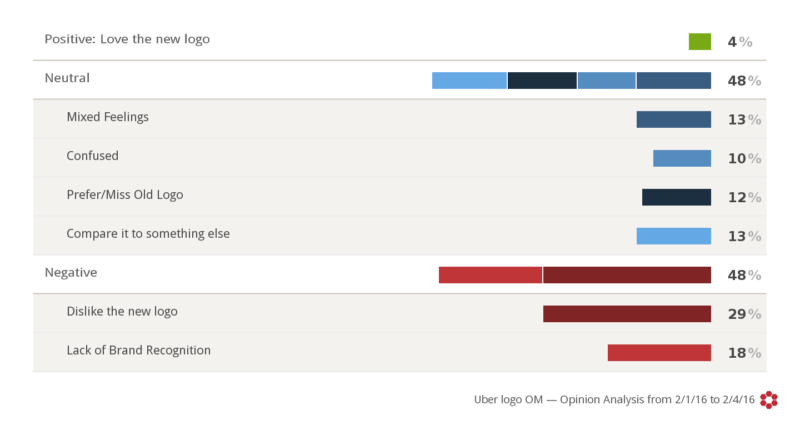Marketers: Track emotions, not just numbers
Columnist John Donnelly III explains why social media analysis needs to go beyond volume data with examples of how sentiment and emotion analysis can help marketers really understand consumers.

What’s more important to marketers: Knowing what their audience is talking about or knowing what their audience thinks about what they’re talking about? The short answer is both. The useful answer is a little more complicated.
When brands analyze social media data, the first step is often to look at the volume of conversation about a topic. Volume is a great way to get started; it’s often the best way to notice and track new or changing conversations relevant to your brand.
Expanding your analysis, though, can lead to insights that are a lot more fruitful. People don’t make buying choices based on how many of their friends mention a brand; they make them based on what their friends say when they mention those brands.
When marketers make choices about their branding strategy, they need to understand the key motivators behind consumers’ buying decisions. This means looking at the underlying emotions and sentiments people express when they talk about brands, products or trends.
Looking at whether consumers express positive or negative feelings on social media is a great way to start. Supporting that sentiment analysis with more data points can lead to even deeper insights.
When you sort individual posts according to specific emotions, you’re able to understand even more about the heart of why consumers behave the way they do. Anger, fear, disgust, joy, surprise and sadness are the six “universal emotions” psychologist Paul Ekman defined in the early 1970s.
Knowing how an audience feels about a product launch is the first piece of capturing their emotional response. The next step is just as important: understanding which individual emotion triggered that reaction in order to pivot and move forward effectively. Three use cases across the automotive industry can shed some light on how to leverage both social media sentiment and emotion analysis to improve a brand’s standing:
1. Knowing when you have a PR problem
Increasing mentions on social media can be great, but digging into why those mentions are rising has to be your next step.
Take Toyota as an example: When mentions of Toyota skyrocketed on January 5, 2017, it wasn’t because of a new product announcement or ad campaign, but rather a response to Donald Trump’s comments on its plan to build a new plant in Mexico.
When you look at the posts themselves, it becomes clear that when mentions of Toyota increased, so did negative sentiment. Toyota issued a statement that neutralized the negative response to its brand in the wake of Trump’s comment, and the sentiment eventually evened out.
Tracking shifts in sentiment can allow for quick responses to potential crises.
2. Monitoring how your audience responds to brand changes
A new product, app update or logo change can spark a backlash from consumers who are used to the traditional brand.
Uber’s “new and improved” logo didn’t get quite the response it was hoping to achieve. Social media users expressed ridicule and distaste for the company’s attempt at a brand refresher, tweeting things like this:
Is there anything more hideous and devoid of meaning than the @Uber logo? 🙄 #RealTalk2016
— Adrian Rojas Elliot (@adrianelliot) August 8, 2016
We found that only 4 percent of social media conversations reflected positive feelings about the new logo, with 10 percent indicating the user felt confused, 13 percent comparing the new logo to something else, 18 percent indicating a lack of brand recognition, and a whopping 29 percent saying they didn’t like the new logo.

When it became clear that its audience wasn’t going to adjust to its brand update, Uber replaced the logo change with a new design that melded the original with the update, saving face while avoiding continuing to alienate its audience.
When introducing a change to your brand, it’s important to analyze the response from your audience.
3. Analyzing potential market opportunities
Are self-driving cars the next cornerstone of the automobile industry or a fleeting trend? For many of us, this is a theoretical conversation, but for automakers, it means the difference between the success and failure of their products.
When social media users discuss autonomous cars, their dominant emotion is fear, indicating that the public has yet to be convinced that self-driving cars are a safe, practical option. Carmakers need to analyze and address the public’s concerns before they invest in the technology that will make these cars a reality.
This doesn’t just apply to the automotive industry, either. As technology begins to outpace what consumers feel ready for, marketers will have to find ways to get buyers on board. Digging into the public’s feelings on new market opportunities allows brands to have a sense of the landscape before investing in developments there isn’t a true market for.
Social media represents the most extensive depository of organic conversations between consumers. This data set offers a huge opportunity to brands and agencies to gather actionable insights on anything, including how people feel about the trends, brands and topics surrounding them.
When marketers and analysts apply natural language processing to that data, machine learning can reveal the feelings behind these topics and allow brands to fundamentally shift the way they interact with their audiences.
Contributing authors are invited to create content for MarTech and are chosen for their expertise and contribution to the search community. Our contributors work under the oversight of the editorial staff and contributions are checked for quality and relevance to our readers. MarTech is owned by Semrush. Contributor was not asked to make any direct or indirect mentions of Semrush. The opinions they express are their own.
Related stories